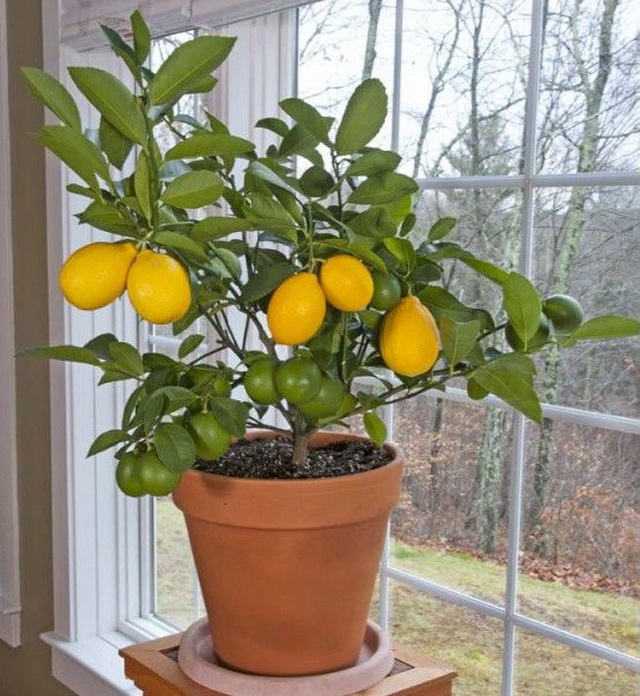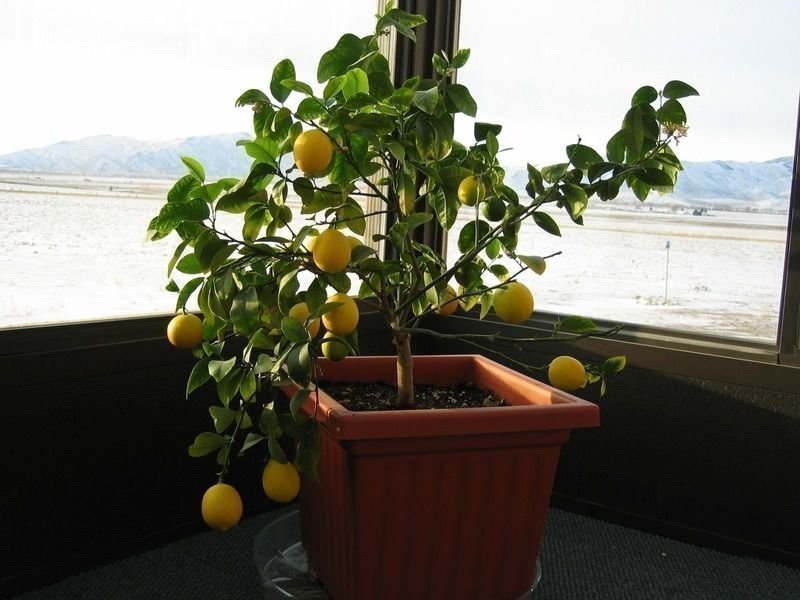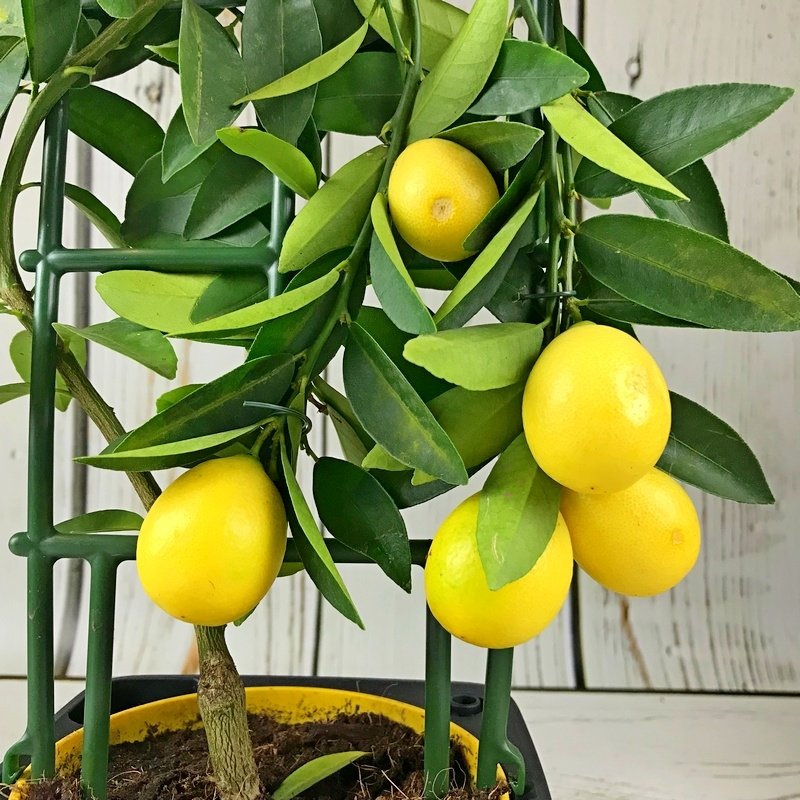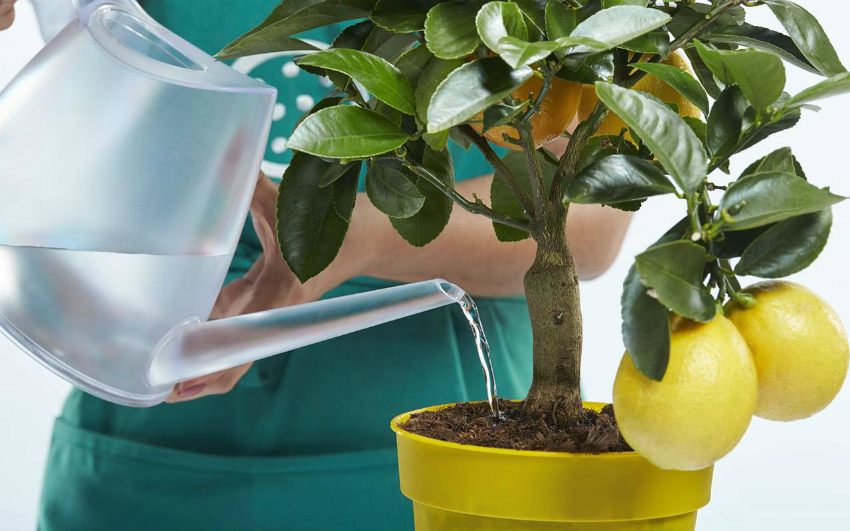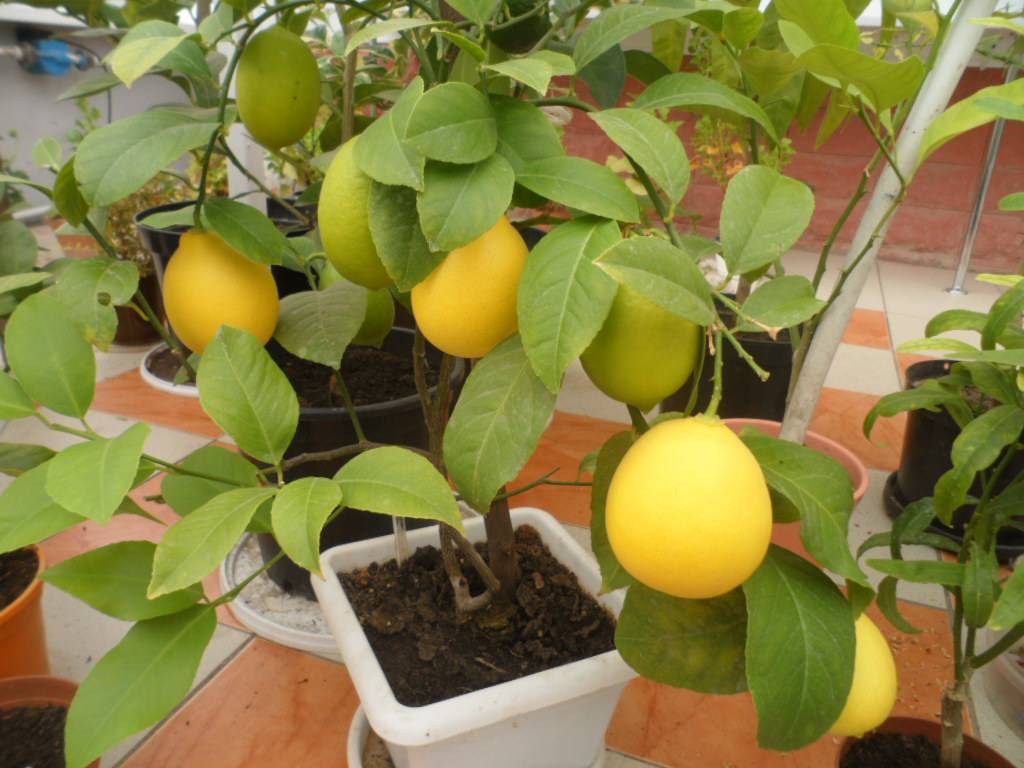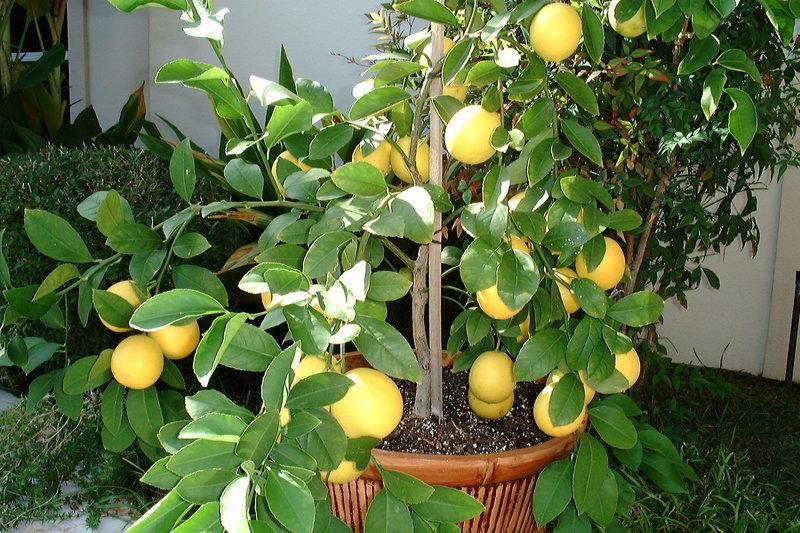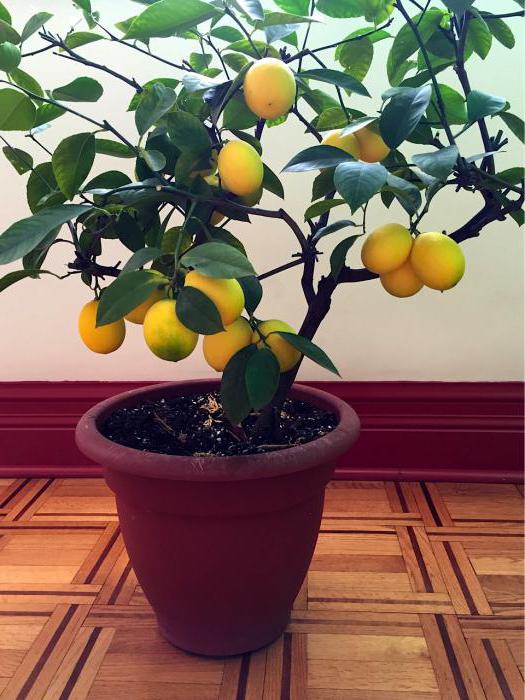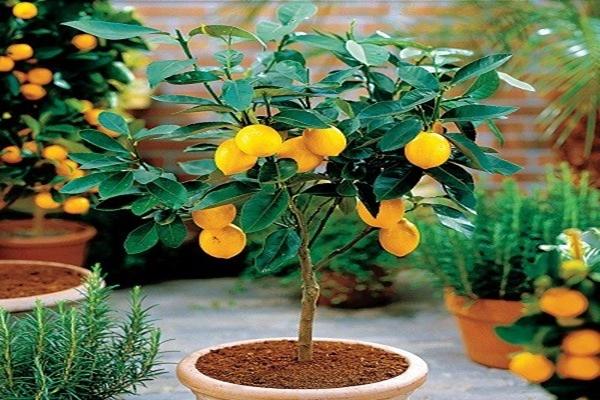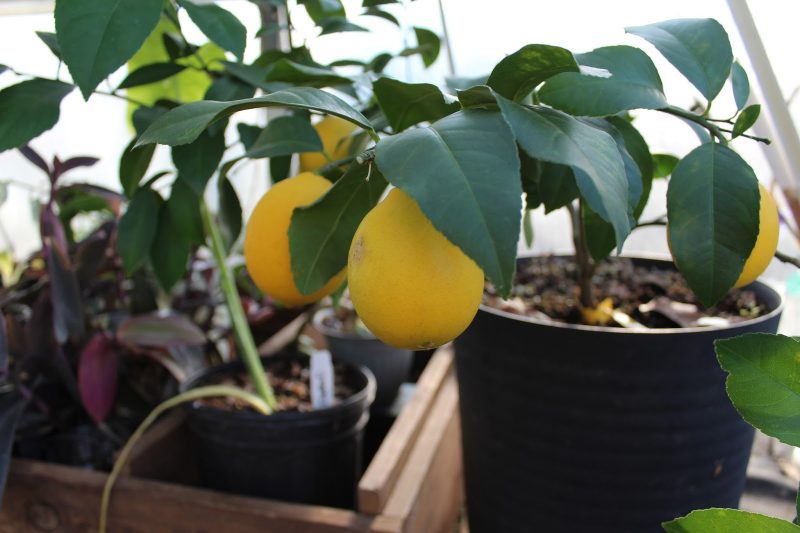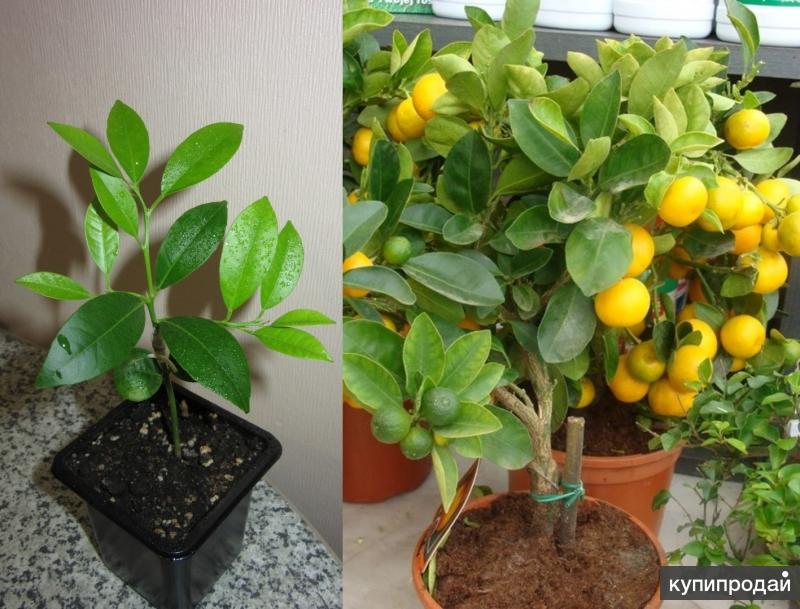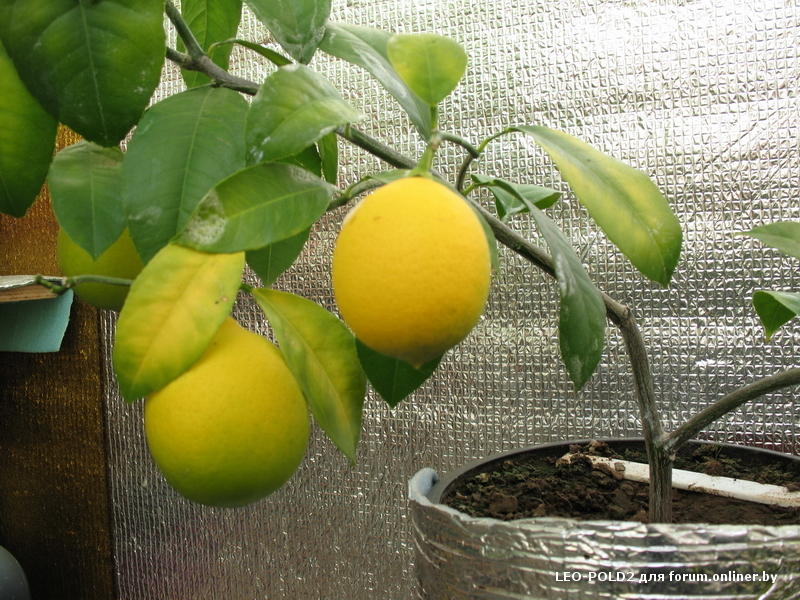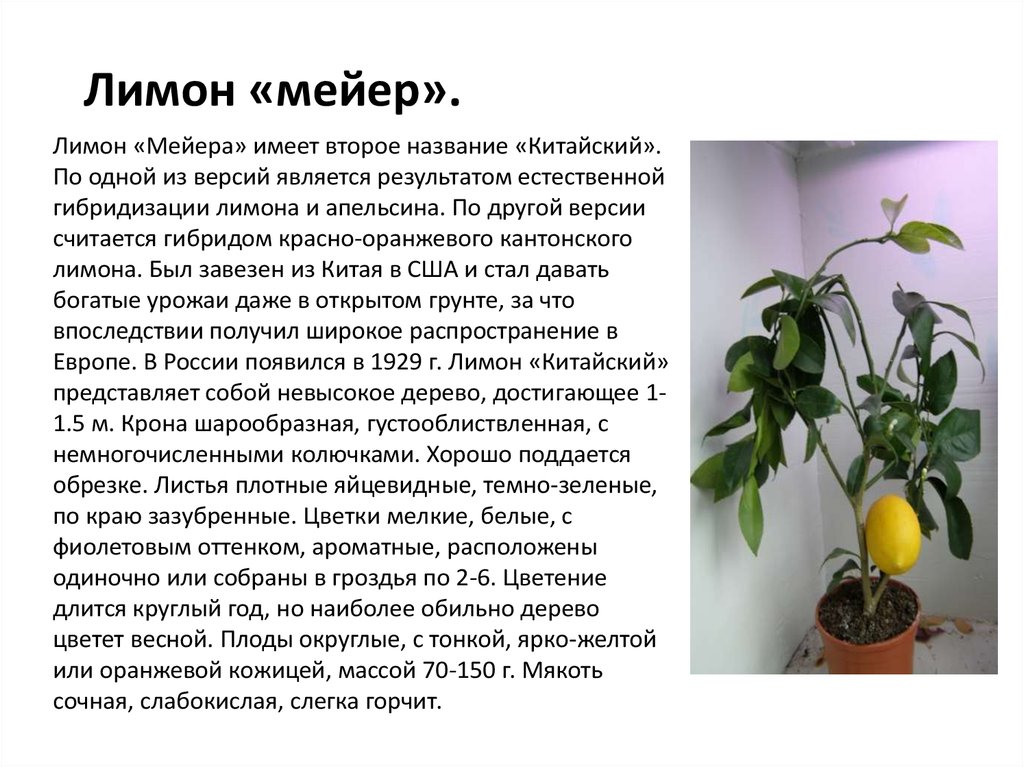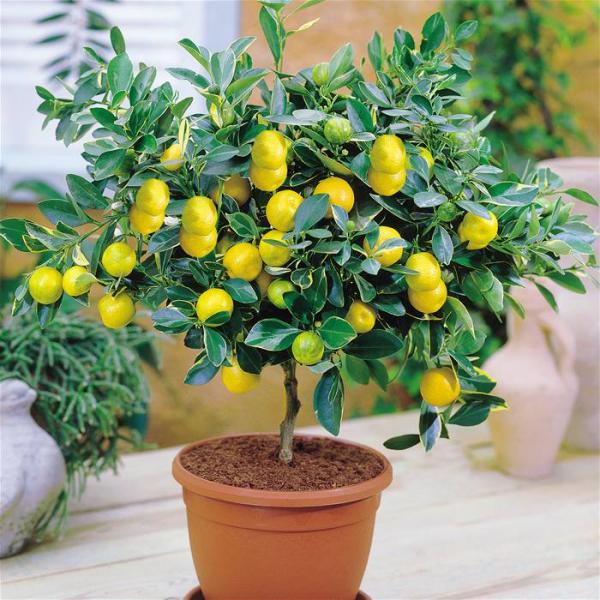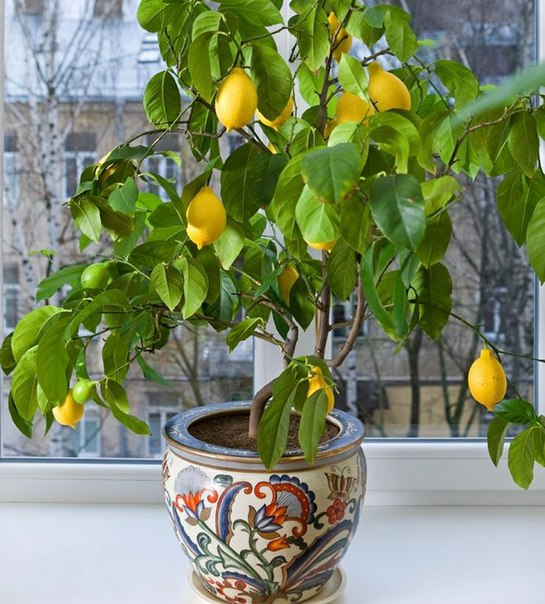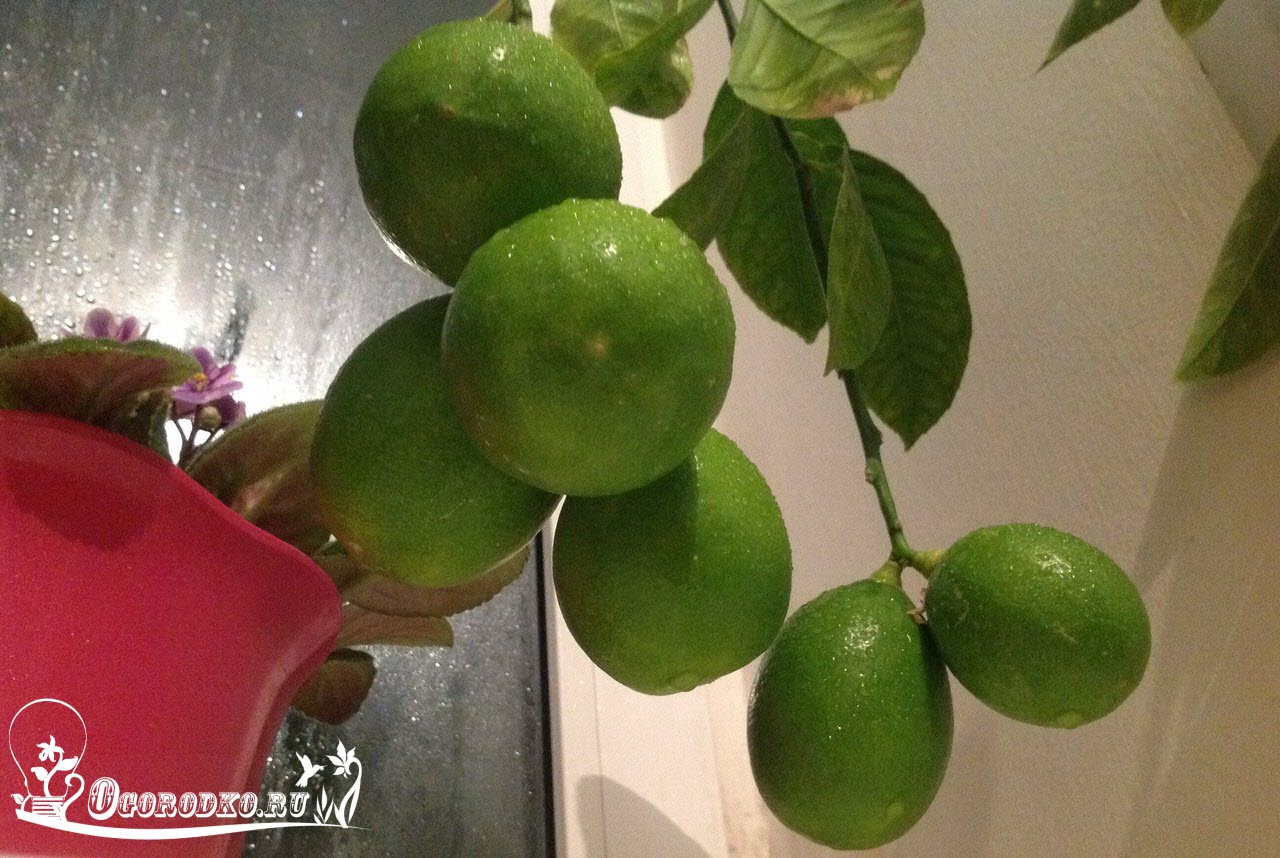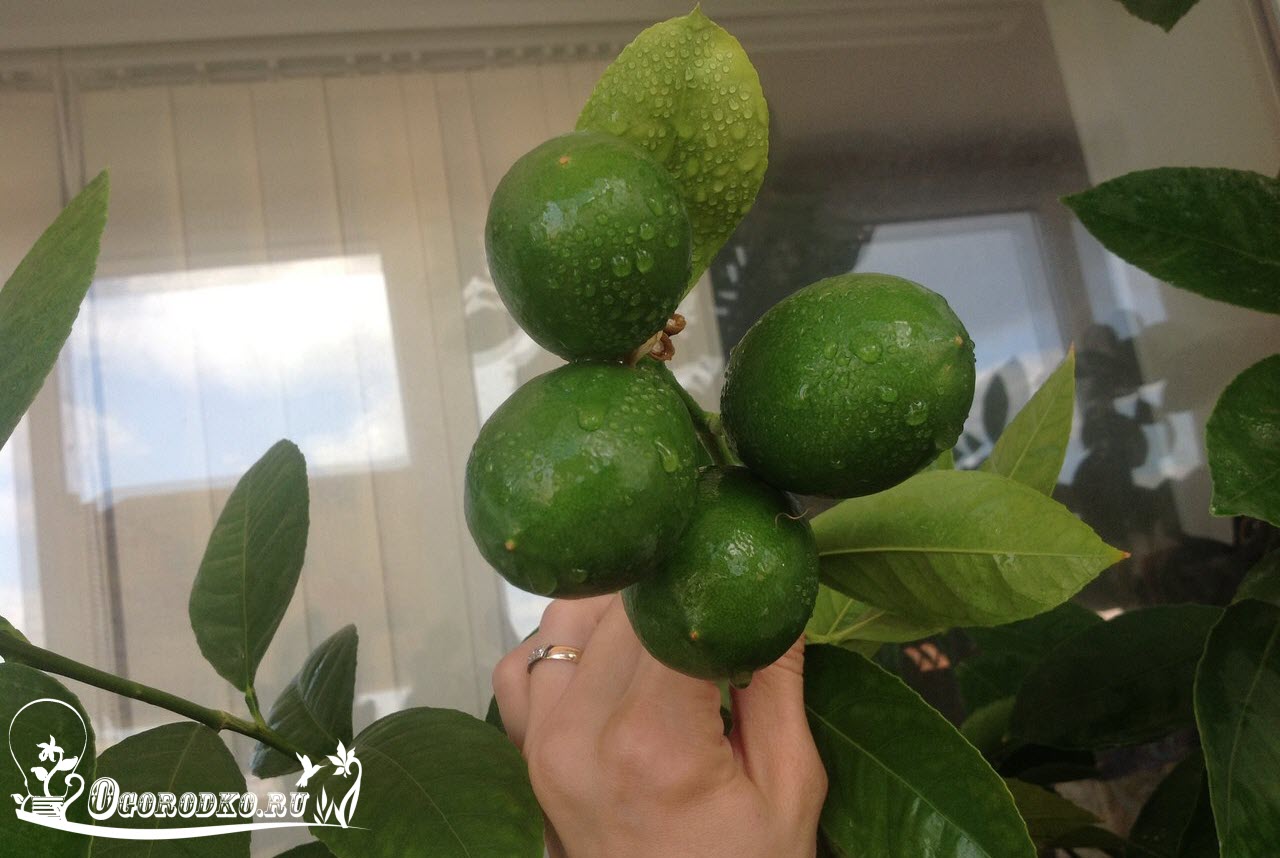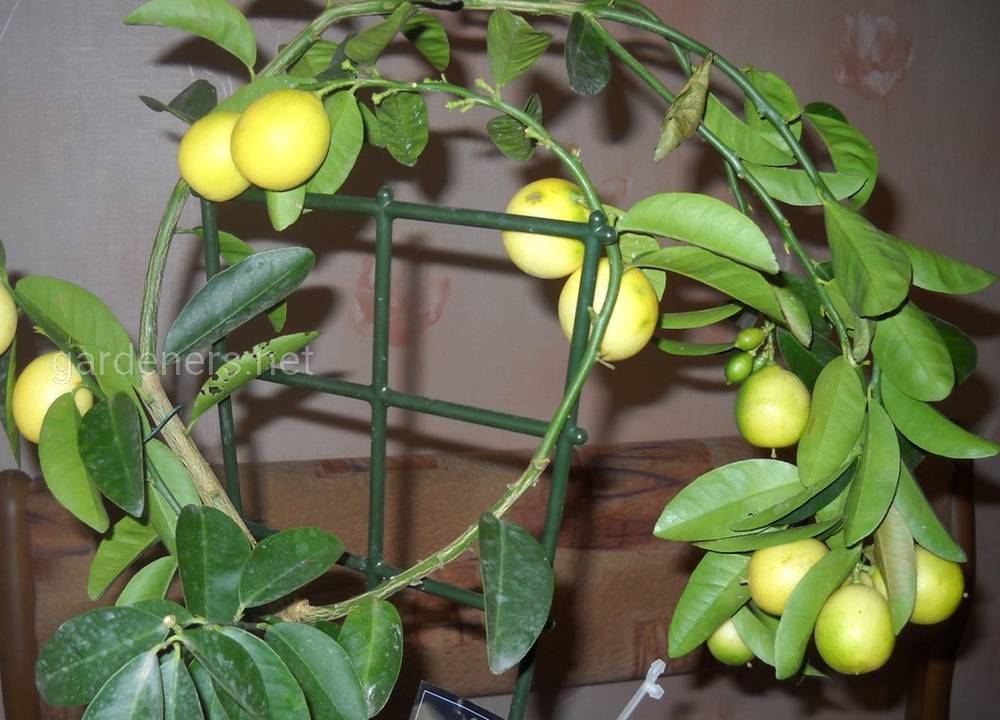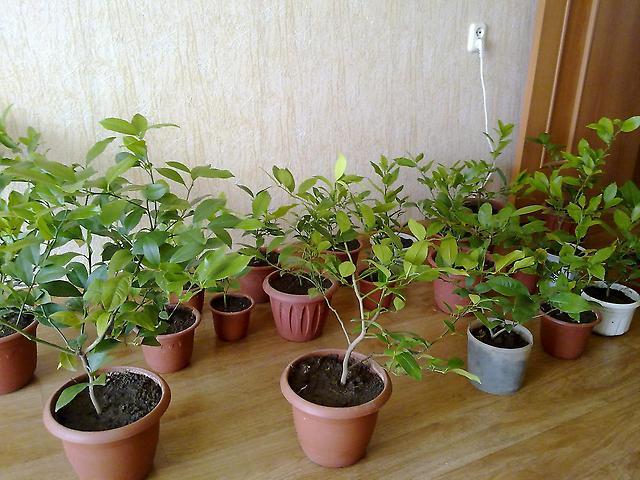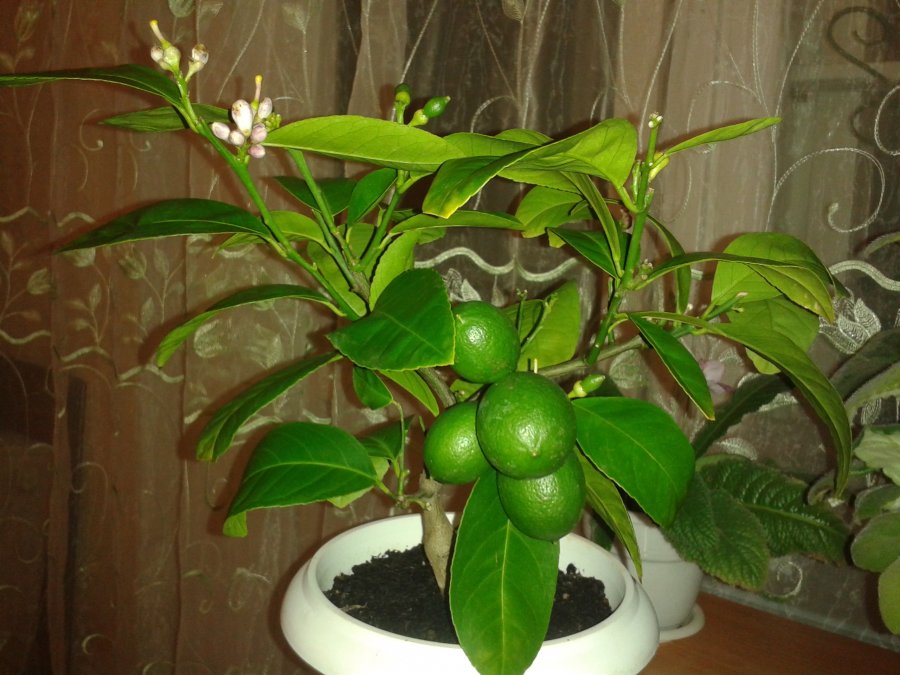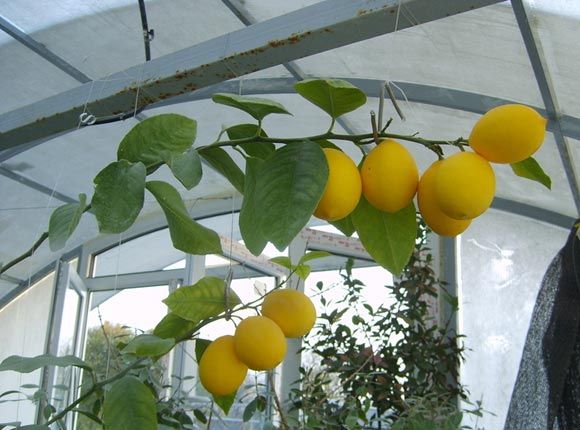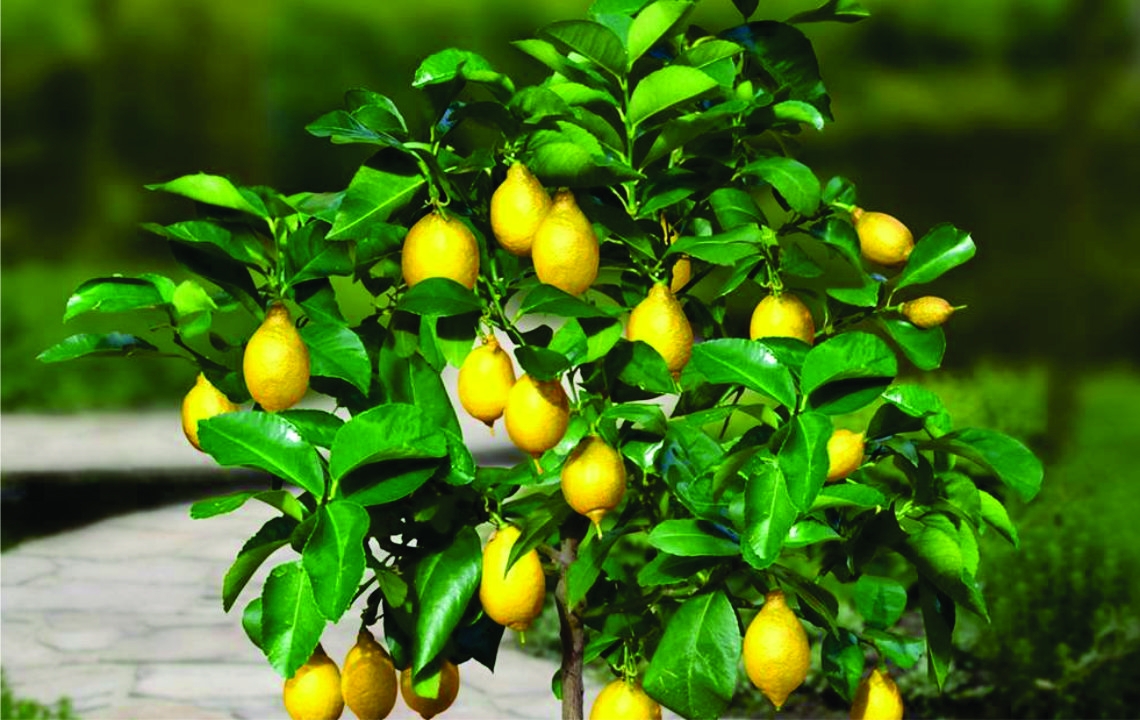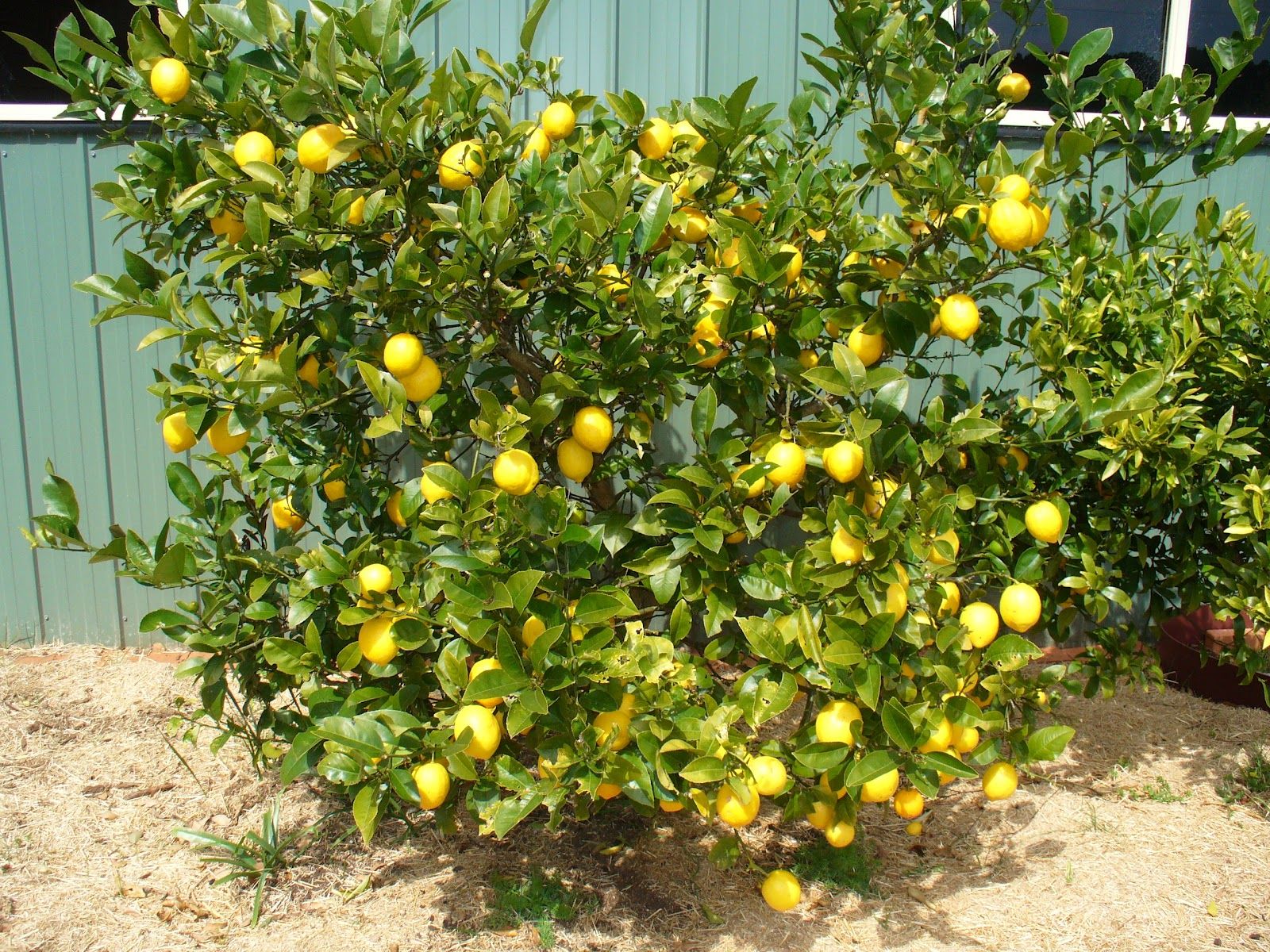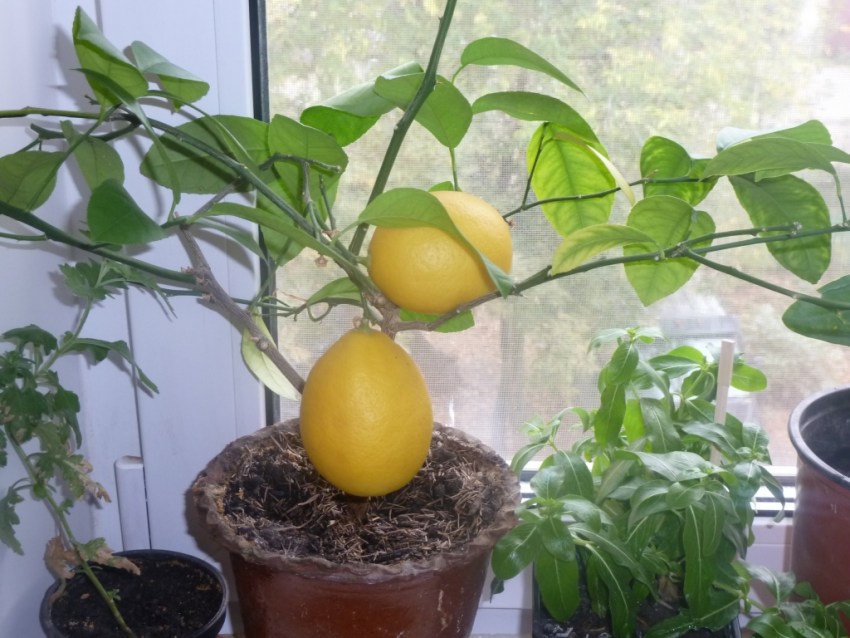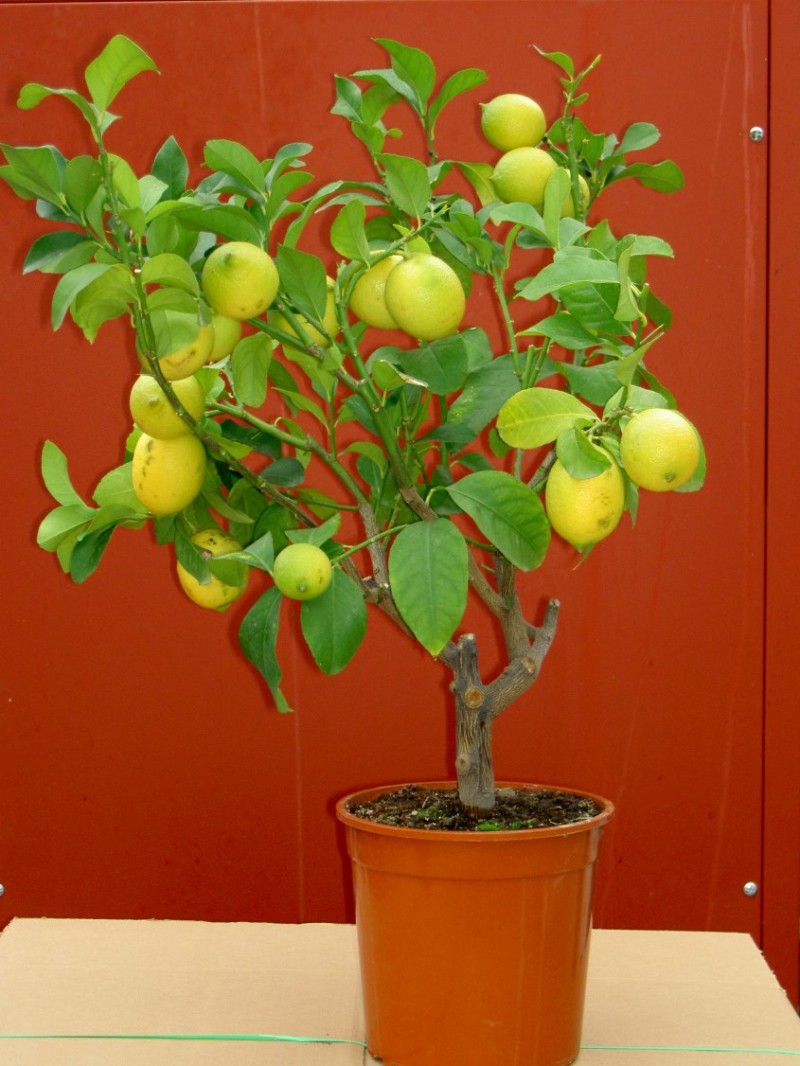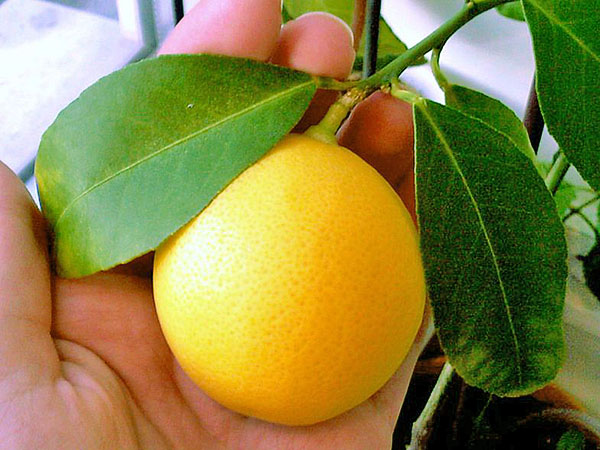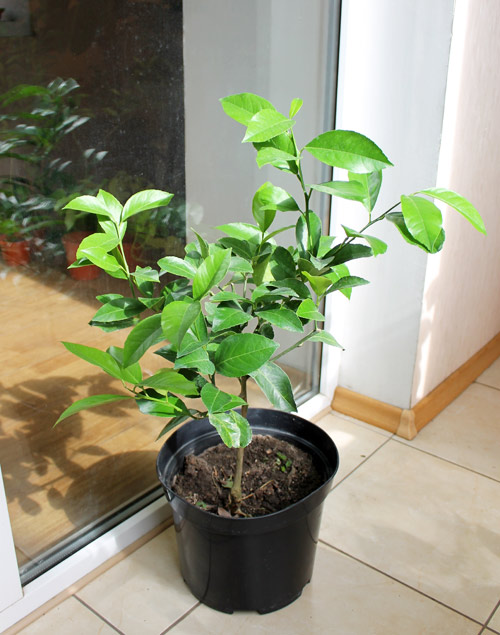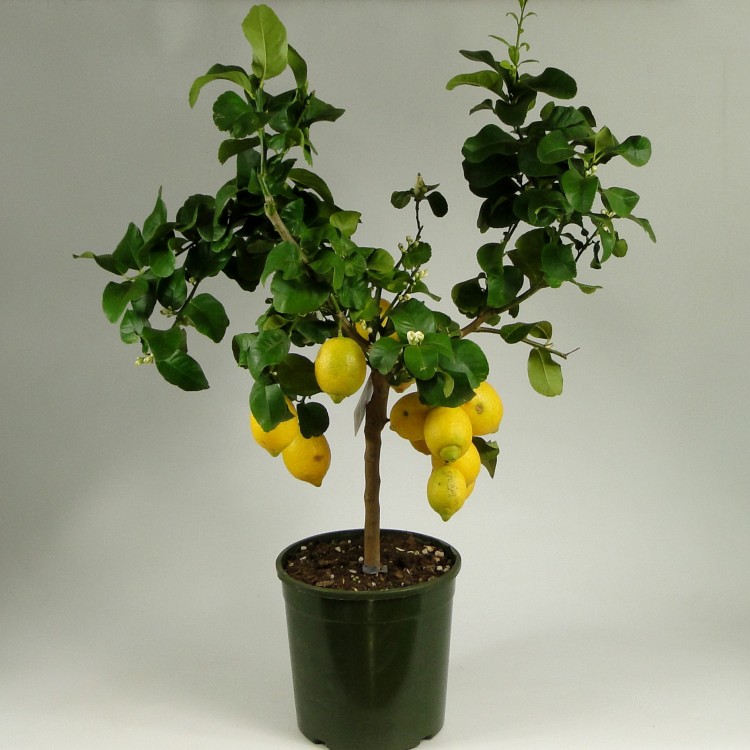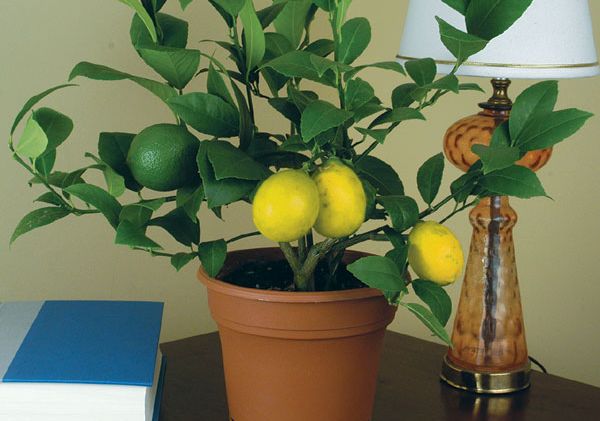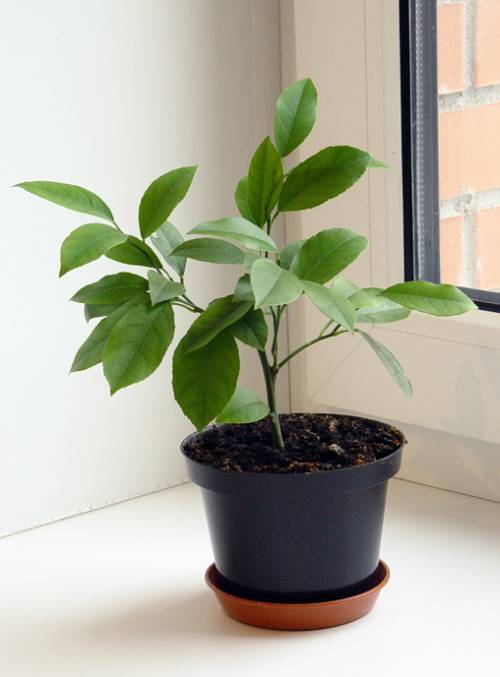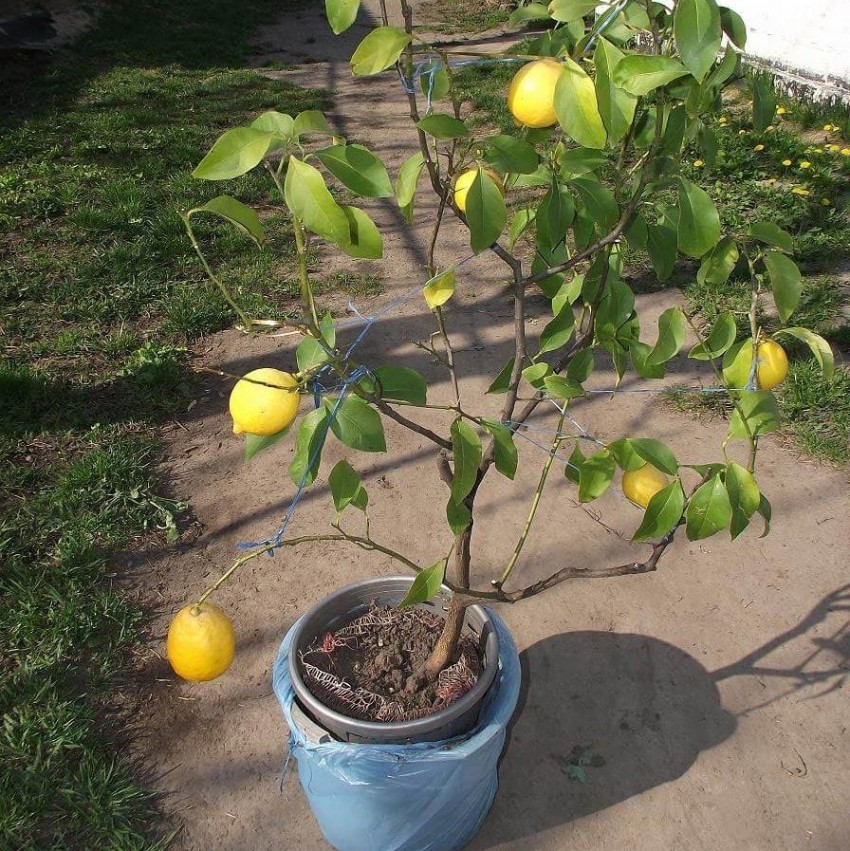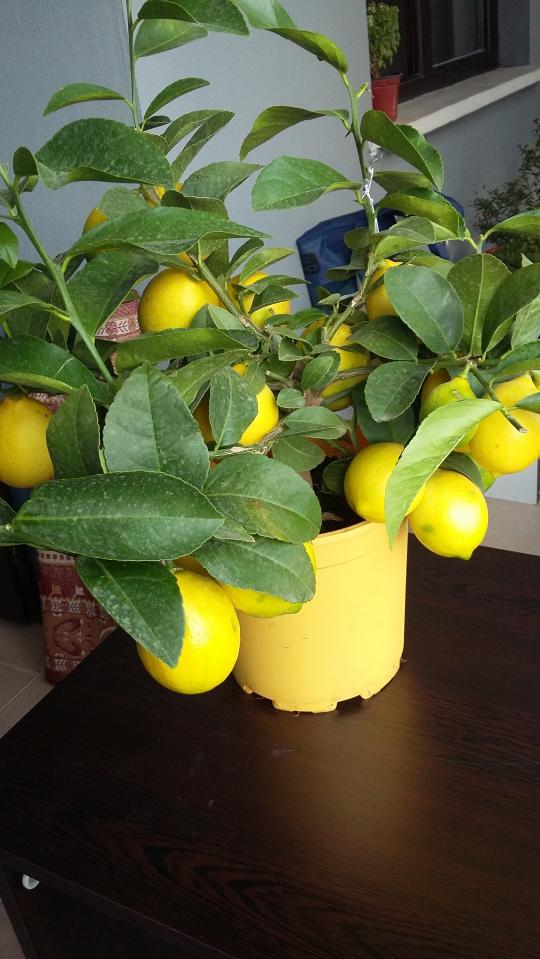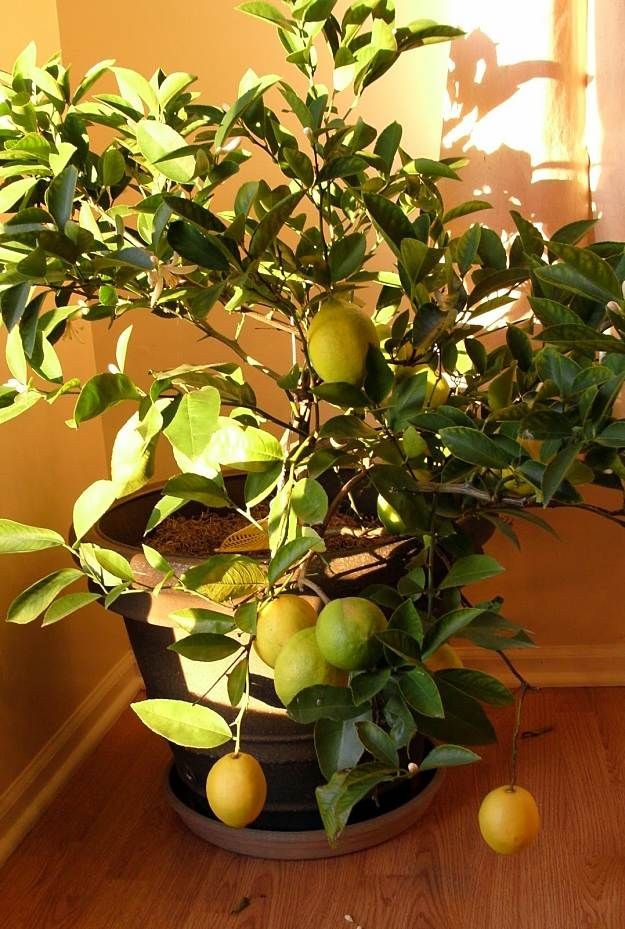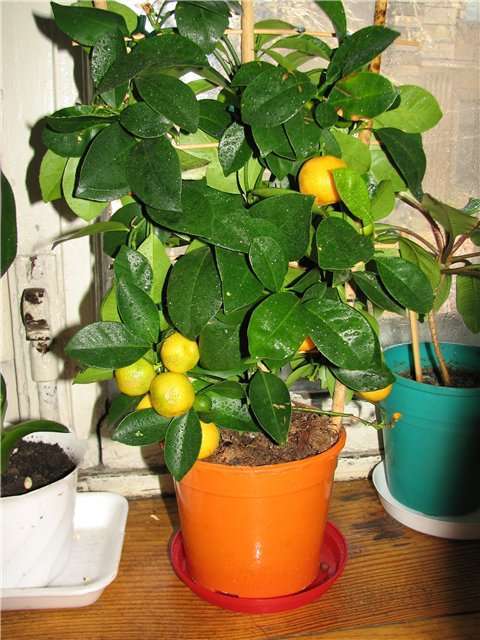Breeding methods of the Meyer variety
You can propagate the Meyer variety in 2 ways:
- By cuttings. Cuttings can be rooted in water or soil, as well as grafted onto seedlings to get strong plants and accelerate their fruiting;
- Grow Meyer's lemon from the seed. When planting seeds, the plants may not retain the varietal characteristics of the crop, but, nevertheless, this method of propagation is very popular and often gives excellent results.
Seeds must be sown in prepared soil, in small containers.
Best of all, one in each pot, so as not to injure the roots of the seedlings in the future when transplanting. After planting the seeds (2 - 3 cm deep), the soil must be watered, and the pots must be covered with foil or placed in a plastic bag in order to prevent the soil from drying out. When 2 - 3 young leaves appear on the seedlings, they must be transplanted into pots and installed in a permanent place.
Planting rules for seedlings
Experienced citrus growers advise planting seeds and cuttings in soil mixtures purchased in specialized stores, designed specifically for citrus fruits. The same mixtures should be used for planting store plants, as well as for further tree transplantation.
When planting a young plant or a cutting rooted in water, as well as when transplanting a tree, it is necessary to monitor the position of the root collar. You cannot deepen it
It is important to plant the seedling so that the root collar is flush with the soil surface.
Each tree needs a separate pot, otherwise it will not work to grow a strong and fruitful tree.
You cannot plant a small seedling in a large container. The pot should be sized, and every year the tree must be transplanted into a larger pot (plus 4 - 5 cm to the diameter). Planting a small plant in a large pot will negatively affect growth and can lead to root rot.
Rooting cuttings
Propagation by cuttings has one advantage, trees obtained in this way begin to bear fruit much faster than those grown from seeds. You need to cut the cuttings from an already fruiting tree.
Twigs left over from the next spring pruning can be used as rooting material.
To root a Meyer lemon stalk, it should have 4 to 5 leaves. Stages of rooting cuttings:
- The finished material is placed for 20 hours in a solution of special rooting preparations or a weak solution of potassium permanganate. After that, the existing sections must be treated with charcoal, removing the 2 lower leaves (there should be 2 leaves, or better 3);
- Immediately after this, the cuttings are placed in prepared pots;
- It is necessary to place drainage on the bottom of the pots, pour citrus soil on top, and sprinkle its surface by about 0.5 - 1 cm with coarse and clean river sand;
- The cuttings should be thrust into the ground 3 cm deep;
- On top of the pots, you need to put on caps. You can use clean glass jars or plastic bags for this. For rooting, cuttings need greenhouse conditions and a temperature of at least 20 ° C;
- Planted cuttings should be placed in a place with bright, but diffused lighting. If buds appear on the cuttings during rooting, they must be removed. The success of the process will be indicated by the appearance of a new leaflet. After that, young trees need to be accustomed to new conditions by removing the cap for several hours a day, gradually increasing this time.
Description and characteristics
The citrus tree is described as having attractive characteristics. Florists attribute Meyer's lemon to the best varieties of the Citrus genus.
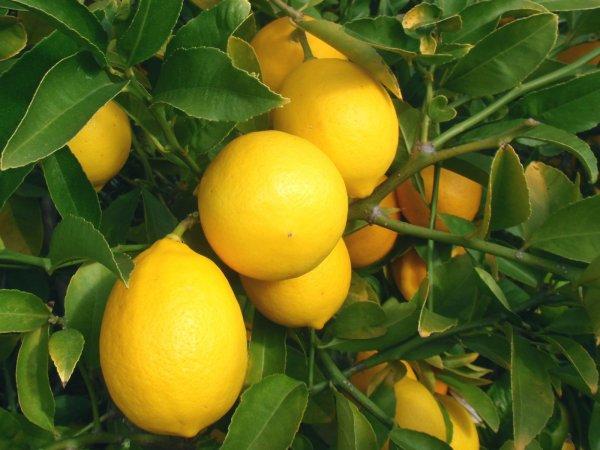
Maximum sizes and annual growth
Due to its miniature size from 1.5-2 m, the Chinese tree fits harmoniously into the living space. Branches with dense foliage form on the main stem. The leaves, elongated in shape, are colored dark green and have a smooth surface with a natural sheen.
Flowering and pollination
The plant is self-pollinated all year round. During the flowering period, snow-white flowers with a purple base are formed on the lemon crown. The citrus scent spreads throughout the space, leaving no grower indifferent.
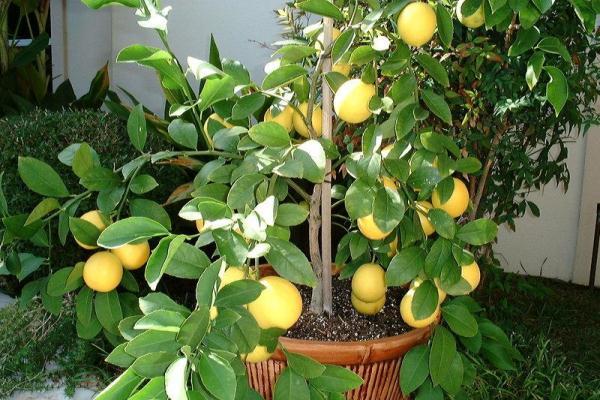
Timing of fruiting and harvesting
Fruiting of Meyer's lemon begins in the 4th year after planting the seeds. During the growing season, much depends on the care: if it was correct and regular, then the tree gives bright yellow fruits weighing from 70-150 g. Their peculiarity is a thin peel, which serves as a protection for the lemon pulp, but at the same time it is easily peeled.
Taste and useful properties of the fruit
Meyer's fruit is superior in taste to other indoor lemons. With sufficient light, timely watering, the composition is replenished with sucrose, thereby diluting the acidity characteristic of an exotic fruit.
High levels of ascorbic and citric acid, vitamin A, B vitamins, pectins, potassium and copper salts make it a valuable product in traditional and folk medicine.
Tea with lemon protects the body from viral, colds, improves immunity, and replenishes the lack of vitamins. Also zest, lemon pulp is used for cosmetic purposes.
Further care
Even if the Meyer lemon is indoor, agricultural care is still required. Watering, pruning, replanting and placing the bush will save the tree from unwanted consequences.
Watering
In order for the humidity mark to be at the desired indicator, in warm seasons, a young tree is watered 2 times a day, in cool seasons it is reduced to 2 times a week. In addition to root watering, the crown and the main shoot are sprayed with water using a spray bottle.
Fertilizer
During the period of maturation of the lemon bush, mineral fertilizers are especially needed. Buy special mixtures with nitrogen, potassium, phosphorus. From spring to autumn, the soil is fertilized once every 15 days.
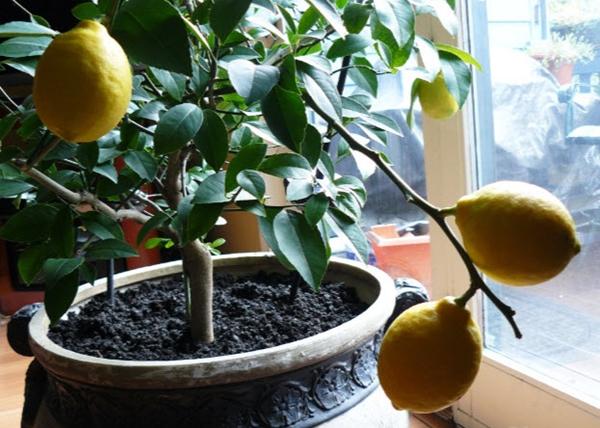
Transplanting and pruning lemon
On the recommendation of fans of the Meyer's lemon culture, the plant should be transplanted every year into a container 4-5 cm larger. When the tree reaches the age of 5 years, the transplant time is reduced to 3 years.
Crown formation ensures uniform nutrition for all parts of the lemon tree:
- the main stem is reduced by 20 cm, fertile buds are left at the top;
- secondary shoots appear from these buds, which serve as the skeletal part, their number should not exceed 3-4 branches, the rest are removed;
- the remaining ones are shortened by 25 cm, the shoots of the second row are reduced by 10 cm, the third by 5 cm;
- in the fourth row, the plant completes its vegetative development.
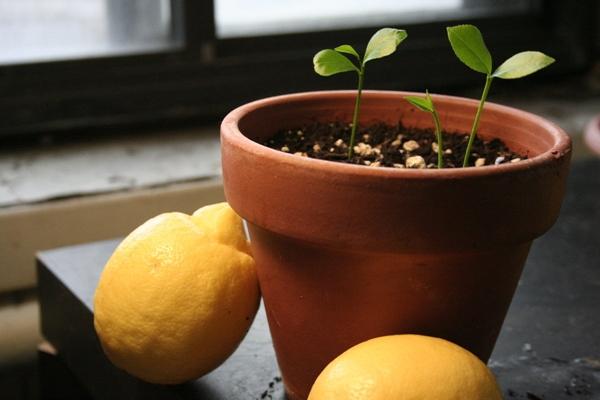
Wintering
In winter, the shrub requires moderation in care, the temperature should be in the range of 12-14 degrees, the lemon should be moved to a place away from heating batteries, heaters.
Prevention and treatment of diseases
Indoor growing reduces the risk of disease, but lack of light and moisture can be other negative factors. In the first version, the leaves turn light green, in the other, they wither and fall off.
Pest control
Common pests of lemon are spider mites, scale insects in the form of black dots. Spider mites are removed with a water jet. For the shield, a mixture of 50 ml of kerosene with 100 ml of liquid soap is prepared.
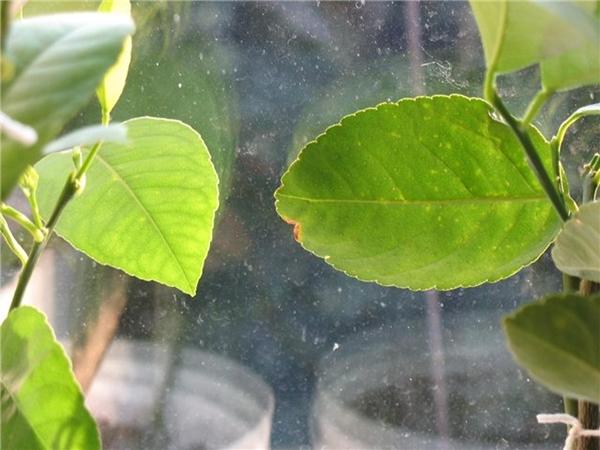
How to grow Meyer's lemon from seed
Meyer's lemon is relatively easy to grow from seed. The sequence of actions will look like this:
- First, it is necessary to extract the seeds from the fruits, rinse them and dry them in direct sunlight.
- The dried seeds are wrapped in cheesecloth, which is placed in a shaded place at room temperature. Check the moisture content of the gauze daily and maintain it.
- As sprouts appear in the seeds, they are transplanted into the ground. In this case, it is recommended to use a mixture used for growing tomato or cucumber seedlings.
- The hatched seeds are placed to a depth of no more than 4 cm.
- The plants are watered daily. After about 2-3 days, the sprouts appear on the surface.
- As soon as the lemon reaches a height of 15 cm, it is transplanted into a larger container.
- When the stem is 8 mm thick, it is necessary to plant the Meyer lemon on a citrus crop.
Important! Without grafting, when grown indoors, flowering and fruiting of Meyer's lemon can occur from 3 to 5 years of age. A lemon grafted onto another plant begins to bloom the next year, and bears fruit in 2-3 years .. The best varieties for grafting Meyer's lemon are Pavlovsky, Kursk, Novogruzinsky and similar varieties
The best varieties for grafting Meyer's lemon are Pavlovsky, Kursky, Novogruzinsky and similar varieties.
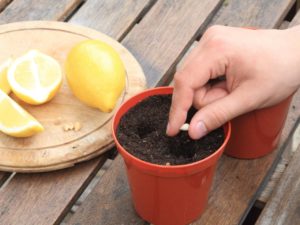
As a soil for planting bones, you can use a mixture of the following composition:
- leafy earth, sand and humus - 1 part each;
- sod land - 2 parts.
The plant is transplanted into "adult" soil, which has the following composition:
- leafy earth, sand, humus and clay - 1 part each;
- sod land - 3 parts.
Description of Meyer's lemon variety
The second known name for Meyer's lemon is Chinese lemon. As a home citrus plant, this variety is very common and loved by many citrus growers. The tree has a beautiful appearance, is compact with timely pruning.
The variety produces a very large number of fruits, a characteristic feature of which is a high content of vitamin juice.
It is easy to grow the plant at home, as this lemon is relatively unpretentious. Due to this, in many countries, Mayer's lemon is an industrial crop and is grown over very large areas.
Flowering and fruiting
This lemon variety begins to bloom very early, as a rule, from 2 years of age, in the event that the tree is grown from a rooted or grafted cuttings taken from an already fruiting tree.
 Photo of flowering lemon Meyer
Photo of flowering lemon Meyer
Lemon flowers are large enough, snow-white, have a very pleasant, fresh and quite pronounced aroma that fills the entire room.
At home, Meyer's lemon usually grows into a small tree, but it can also have the shape of a bush, which largely depends on the formation of the growing seedling and its pruning.
The flowers are evenly spaced, while sometimes the buds can have a slight lilac shade at the base. In young seedlings, the flowering process must be controlled.
Since the tree can bloom from the second year, this cannot be ignored. If at the time of the release of the first buds the tree does not have a large number of leaves or looks weak, then it is recommended to remove the buds.
The variety is distinguished by continuous fruiting, flowers and fruits are formed on it throughout the year.
In one season, it is often possible to get about 3 kg of juicy lemons from one small tree. The peak of flowering is observed in spring, since at this time the buds appear in whole clusters of 5 - 7 pieces each. The number of ovaries formed in this case depends on the correct care of the tree. Full ripening of fruits occurs in 8 - 9 months.
Crohn and its characteristics
Under normal home conditions, Meyer's lemon usually grows up to one and a half meters in height, but in most cases the tree is slightly lower, but it has a very wide crown.The peculiarity of this type of lemon is that it grows lateral shoots quite quickly and in large quantities, most of which quickly begin to bear fruit.
The thorns of this lemon variety are small and practically absent on the branches, most of them are concentrated on the surface of the main trunk. Typically, Meyer's lemon does not tend to grow into a beautiful tree.
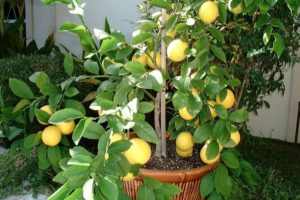 Photo of the crown of the Meyer lemon variety
Photo of the crown of the Meyer lemon variety
Most often, it forms the shape of a low and very spreading bush, which is much more convenient for abundant fruiting. To form a tree, it is necessary to carry out special regular pruning from the first year of life.
The leaves of this tree are small, numerous, dense, rather tough, have a dark green color and are distinguished by an attractive glossy sheen.
Their shape is mostly ovoid, but small notches can be observed along the edges of the leaf plates. If a leaf of this lemon is rubbed in the palms of your hands, a scent will appear, reminiscent of citrus essential oil, uncharacteristic of a lemon tree, indicating that the variety is a hybrid.
Lemon fruit
Normal and stable fruiting of Meyer's lemon seedlings usually begins at 3 years old. Meyer's lemon fruits are small and round in shape. Their weight can reach 100 - 150 grams. The main feature of the fruit is that when ripe, they bear little resemblance to lemons.
Their zest, when fully ripe, acquires a dark yellow color with a very pronounced orange tint.
The peel of the fruit is thin, aromatic, smooth, and has a slightly sweet taste. The pulp of the fruit also has a dark yellow color, is distinguished by its juiciness and special taste, uncharacteristic for other varieties.
Their taste is quite sweet, with an orange flavor, and does not have the same amount of acidity as other lemon varieties.
There are very few seeds in these lemons, as a rule, only a few pieces. In stores, these lemons are practically not found, since if fruits are stored well enough at home in a refrigerator, then transportation, especially over long distances, they tolerate very poorly.
What is Meyer's lemon
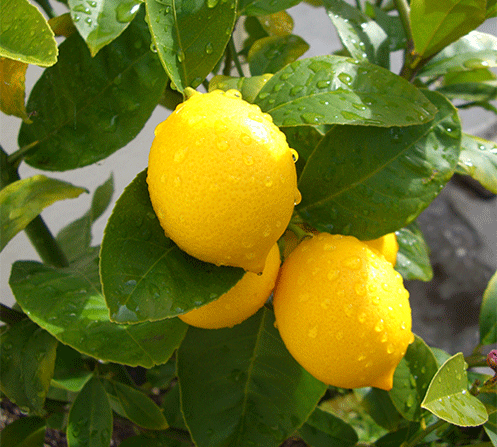
Over time, it was possible to develop a disease-resistant, improved Meyer lemon. There are countries where it is bred on an industrial scale. But it gained the greatest popularity as an ornamental fruiting plant among flower growers who grow Meyer lemon at home.
It is loved for its compact size and high yield. It is a dwarf species of the genus citrus, reaching a height of no more than 1.5 meters. The lifespan is up to 50 years.
Features of the plant:
- The leaves are dark green, with small notches along the edges.
- The flowers are small, white, with a subtle purple hue. They have a delicate aroma. Lemon flowers can even be brewed into tea, which is obtained with a very subtle jasmine aroma. It blooms very intensely, so some of the flowers must be plucked so that they do not draw out a lot of nutrients from the plant and do not inhibit its growth.
- The fruit of the Meyer lemon is different from the lemons sold in stores. They are round, deep yellow or orange. The rind is smoother and thinner, without the usual tubercles, like in other varieties. The pulp is orange-tinged, very juicy. Taste - sweet and sour with a touch of bitterness. There are always a lot of seeds inside.
It is rich in vitamin C, which makes it a popular antipyretic. Indispensable for raising immunity during colds. Fruits appear after 8 months of flowering. The tree can be harvested almost all year round. A mature tree produces up to 3 kg of lemons per season.
Description of culture
Indoor lemon is an evergreen dwarf tree with thorns on its branches. Lemon leaves are bright green, oblong, very dense. They contain glands with essential oils that bring a pleasant, fresh citrus scent to the room.Young pagons stand out with a rich violet-purple hue. The buds develop in about five weeks. The flowers are white, collected in an inflorescence, characterized by a pronounced aroma. One flower can live up to nine weeks.
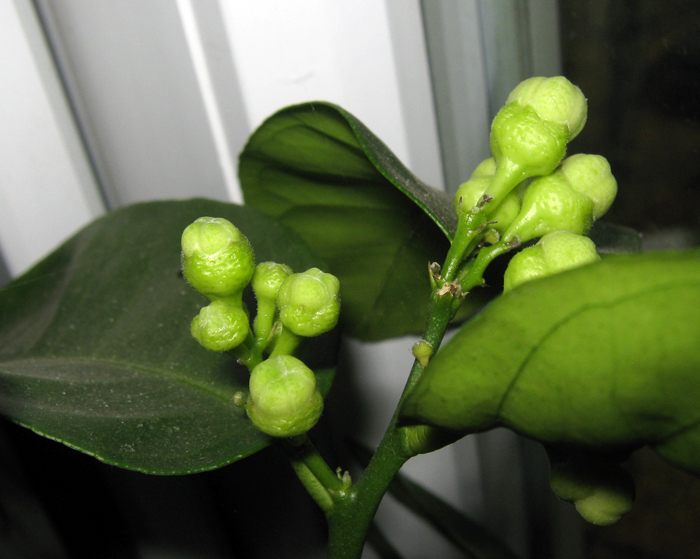
Lemon in buds
The fruit ripening process can take more than nine months. They are generally ovoid with a tubercle at the base. Color and size may vary: from deep green to pale, almost yellow or striped. There are lemons weighing more than 100 g, there are smaller ones - up to 50 g.
Important! If the ripe fruit is not picked, it can hang for a long time without losing its attractive appearance, but the taste will deteriorate - the pulp will become dry, tough
Meyer's lemon: home care for the variety
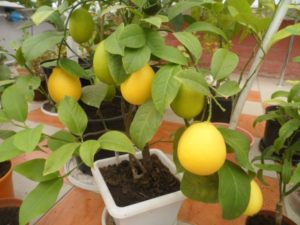
According to research by specialists, Meyer's lemon is a hybrid variety (the result of crossing a lemon and an orange). Why is this tree often called the Chinese lemon?
In 1908, the scientific researcher Frank Meyer first brought lemon fruits to the United States, which had a lot in common with the orange.
Since this variety was discovered in China, the second name is predetermined for its origin - the Chinese dwarf lemon.
What does Meyer's standard or bush lemons look like? This is a low-growing citrus tree, the height of the trunk of which does not exceed 1 meter under conditions of home cultivation.
Feature of a tropical plant: it blooms several times a year. The flower petals are white or light purple in color, exude a subtle captivating aroma. The inflorescences are collected in bunches. The foliage is deep green throughout the year.
What fruits are typical for indoor Chinese lemons? Small citrus fruits, which are almost completely devoid of seeds. The shape is round. The peel is yellow in color with pronounced orange hints. The fruits are juicy and fragrant, the pulp is pale orange in color.
Pros and cons of growing
Like any indoor tropical plant, this lemon has both advantages and disadvantages of cultivation.
The positive aspects include:
- interesting appearance of a homemade citrus tree;
- tolerates coolness and can be grown in different climatic zones;
- subject to the appropriate conditions for keeping the citrus of a dwarf variety, it blooms profusely (often many times throughout the year) and bears fruit well;
- performs not only a decorative function, but also gives delicious juicy fruits.
Negative characteristics include:
- a high tendency to various diseases and attacks of insect pests if the rules are not followed in the care and maintenance of a standard or bush plant;
- citrus, the fruits of which are unsuitable for transportation and long-term storage.
How to create the necessary conditions
Do you want to grow indoor lemon on your windowsill? Follow a series of simple conditions and rules from professionals, and soon your home garden will be replenished with a beautiful tropical plant.
So what recommendations should you follow? What should you pay attention to?
Lighting and location
Caring for a Meyer lemon means providing enough light. The optimal daylight hours are 12 hours. For the winter season, support with phytolamps that provide diffusing light will be needed.
Chinese lemon is photophilous, but a large amount of sunlight can cause burns to the tree. The best place to place a lemon flower pot will be the west or southeast side of the house.
Humidity
For a comfortable existence of citrus indoors, do not forget to maintain the required level of humidity. A tropical plant loves moisture, so the optimal value is a moisture level of at least 60-70%.At lower or higher rates, this variety of standard or bush lemons can get sick and die.
Meyer's lemon care rules
Meyer's lemon does not require much home care. The key points in the content of citrus fruits are called the organization of watering, replenishment with useful substances and minerals, the formation of a crown (bole or bush) and the prevention of diseases characteristic of citruses grown in the house.
Fertilizing
Fertilization traditionally falls on the growing season (from early spring to late summer).
You can use both organic fertilizers and ready-made mineral complexes. It is recommended to purchase complex fertilizers marked “for citrus fruits” in flower shops, which are rich in potassium, phosphorus and nitrogen. In winter, lemons do not need to be fed with minerals and other useful substances.
Disease prevention and insect control
The pests that have chosen citrus trees are the scale insect, spider mite and aphids. Timely identification of signs of insect presence will help protect the lemon tree from death. Remember to check citrus periodically for any symptoms of any ailments. After all, it is better to prevent any disease than to eliminate its consequences later.
Reproduction of lemon at home
Growing a lemon at home is easy. Both generative and vegetative methods of its reproduction are used. Both options have advantages and disadvantages.
Seeds
Lemon seed propagation in most cases gives only a wild plant. However, such a tree is distinguished by increased endurance and unpretentiousness. Later, it blooms and gives less tasty small fruits than cultivated plants, but becomes a good stock for various varieties and hybrids.
To grow a lemon from a seed, it is important to choose a suitable planting material. The fruit for its receipt must be ripe, have a uniform color
It should be free of rot, stains and other signs of infection and pests.
Good bones are light, convex on both sides and firm. They are distinguished by uniform color and absence of spots.
Seeds are sown to a depth of 1-1.5 cm in a total container. After planting, the soil is watered with water, covered with foil and removed to a warm place.
After the emergence of seedlings, the plants begin to ventilate, gradually increasing the duration of the procedure. They are seated in individual containers after the appearance of 2 true leaves. The next time, the transplant is carried out when the roots fill the pot.
Cuttings

Cutting allows you to get a varietal lemon with characteristics of the mother plant. The tree begins to bear fruit already for 3-4 years. However, plants obtained from cuttings are less hardy than those grown generatively.
Cuttings for growing lemon are bought in nurseries or cut independently from a fruit-bearing tree. The mother plant should not show signs of pest or infection. The branches from which the planting material is obtained must also be healthy.
Such a distance retreat from the edge of the branch so that 2-3 live buds are present on the pruning. The stalk is soaked in a light pink solution of potassium permanganate and a root formation stimulator.
Then the cutting is dug into the ground so that it stands unsupported. The ground is watered, the branch is sprayed with warm water and covered with a bag. Air and spray daily.
The awakened buds testify to rooting. If the seedlings are in a common container, they are dived at this stage. When planting directly into individual pots, the transplant is carried out when the root system fills the entire container.
Vaccination
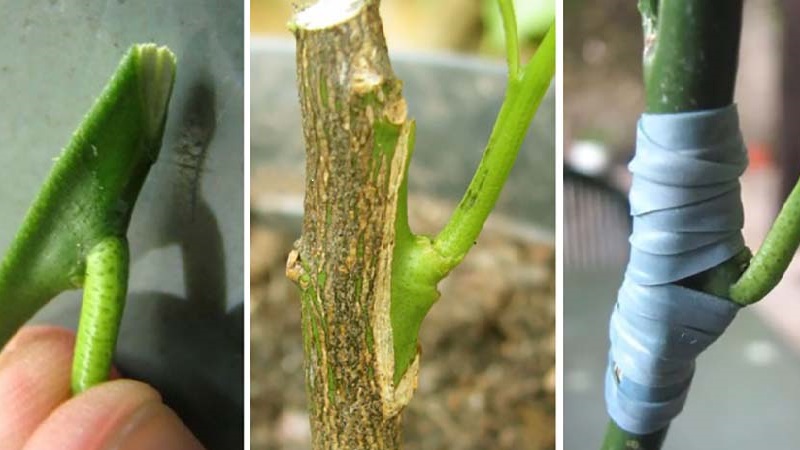
Grafting is used to get poorly rooted varieties or to cultivate wild boar grown from bone. It is more convenient to graft the stock to a young scion. In this case, the plants are cut so that only the trunk remains.
A 1.5-2 cm deep incision is made in the center of the trunk. The branch from the side of the cut is grinded so that a wedge is obtained. The scion wedge is inserted into the rootstock incision. The junction is wrapped with garden tape or electrical tape.
The grafted lemon is placed under a bag or cut bottle, ventilated and watered regularly. The fact that the scion has taken root is evidenced by the formed leaves and shoots.
Lemon tree care
In order for a tree to grow strong and healthy, it must be properly looked after, while creating as comfortable living conditions as possible, close to the region of natural growth of such a plant. There are several aspects to quality care.
Lighting
In order for the plant to be able to fully bear fruit, it must be provided with intense sunlight throughout the year. The best option would be to create a 12-hour day, in such conditions the tree is actively growing foliage, but if the number of light hours decreases, then there is a risk that the lemon will drop all the green mass and simply die.
Florists recommend placing a pot with a plant on a western or eastern window sill, while artificial lighting is required in winter.
Temperature regime
Mayer's lemon does not tolerate drafts and sudden temperature changes very badly, therefore it is not recommended to take the plant out to an unglazed and unheated balcony or to the street.
 Drafts and temperature changes adversely affect Meyer's lemon
Drafts and temperature changes adversely affect Meyer's lemon
In the summer, it is important to avoid overheating, so in intense sunlight and a lot of heat, it is best to slightly shade the tree so that it receives the right amount of light, but does not burn from high temperatures. The ideal indicator is considered to be 20 degrees Celsius.
In winter, it is necessary to maintain the state of rest of the lemon tree; for this, the pot is transferred as far as possible from the batteries, trying to provide the plant with a comfortable temperature of no higher than 12 degrees.
Watering
For the comfortable existence of the plant, it is recommended to maintain the humidity in the room at 70 percent.
Water the lemon tree with both root and foliar method. Simultaneously moisturizing the soil and spraying the foliage from a spray bottle. In the spring and summer, the procedure is repeated in the morning and in the evening every day; in the autumn and winter, the frequency of watering is reduced to 2 times a week.
The earthen ball should always be moist, drying out can lead to the death of the plant.
Pruning
To form a beautiful crown of a tree, you need to take care of its pruning in advance, for this you need:
- The grown stem of the seedling is shortened to a length of 20 centimeters, while leaving several developed buds in the upper part;
- The shoots grown from the remaining buds will become skeletal branches, of which 3-4 are the healthiest ones, and the rest are cut off;
- Skeletal branches are cut to a length of 25 centimeters;
- Shoots of the second order should be no more than 10 centimeters;
- Third order - more than 5 centimeters.
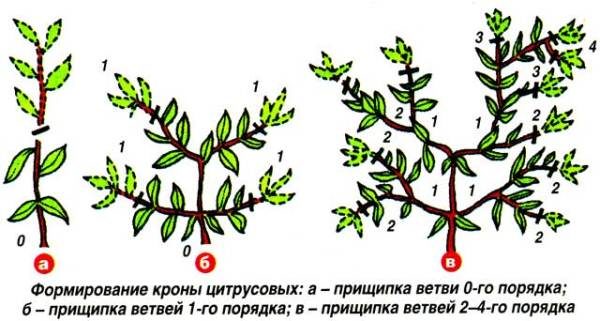 Meyer's lemon pruning scheme
Meyer's lemon pruning scheme
As soon as the shoots of the 4th order appear, the formation of the crown of the tree is considered complete. Now, every year in the spring, they carry out sanitary pruning, removing all diseased, yellowed, dried or damaged leaves.
Home care
In principle, it is not difficult to take care of it. But you should be aware of some features.
When buying a Chinese lemon (if you did not propagate it yourself), you should find out if this plant is grafted or rooted. It was grown from a cuttings or from a seedling.
It is important to remember that Meyer's lemon is an evergreen subtropical plant, and you should take care of organizing additional artificial lighting in advance if natural light is not enough.
Lighting
Requires a lot of light. Therefore, if the plant will be in an apartment, it should be installed near the south window.If the plant is on the street, then it is installed in the most illuminated place.
If there is little natural light in the room, then you should take care of artificial lighting. It responds positively to direct sunlight, and additional shading is not required.
Temperature

cold wintering
If you do not do this, then next year it will simply not bear fruit.
Lemons are very painful to temperature changes! And if it is possible to take the plant out into the yard, then this should not be done immediately, but gradually. Meyer's lemon should be accustomed to outside temperatures and direct sunlight. In the fall, they do the same, only now the plant is brought back into the room.
Air humidity
This is a very important parameter. Since the plant originally grew in the tropics, it requires a humid climate.
Therefore, the room is installed at some distance from the heating radiators, and the air around the plant is regularly sprayed with water. The more moisture in the air, the better for the lemon.
Water the plant
Watering must be done regularly! On hot summer days, the plant is watered every day. In winter, when a state of dormancy sets in, it is enough to water a couple of times a week.
When watering, do not fill in the earthen lump! It will be enough to moisturize it.
To avoid flooding, create a good drainage system in the pot before planting. Then excess moisture will not accumulate at the roots, and their decay will not occur.
Bloom
In order for the plant to bear fruit abundantly, it is necessary to achieve high-quality flowering. To do this, if the plant is young and weak, all the flowers that appear are removed.
At this stage, there is another task - the plant should get stronger. When an adult plant blooms, one ovary remains, and all other inflorescences are removed again.
Fertilizer
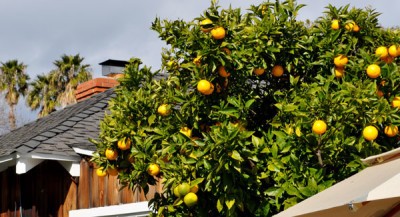
feeding through the leaves
For this, the plant is sprayed with water, to which fertilizers intended for citrus fruits are added.
If the plant has been transplanted recently, then fertilizer is not required for it. It is enough to water it regularly and abundantly.
After the tree has been adapted and got stronger, you can feed it. For this, mineral and organic fertilizers are used.
The feeding process is seasonal:
- April - September a month 2-3 times;
- January-April 4 times a month.
Transfer
Young plants are replanted every year. After the lemon reaches the age of 3 years, it is transplanted less often. About once every two years. However, if the condition of the plant deteriorates for any reason, it can be transplanted unscheduled.
A transplant is carried out either in the fall, until the cold comes, or in the spring. For transplanting, it is necessary to water the potted soil abundantly so that it becomes soft, and carefully remove the tree by the stem.
The earth ball should not be damaged, and the root system should not be affected.
It should be transplanted into a pot that is 30% larger. If the container is very large, the growth of the lemon will slow down. The tree is placed in the center of a new pot and covered with soil. The laid soil is lightly pressed. No ramming required.
Quite often it happens that the lemon drops the ovary. What if Meira's dwarf lemon sheds its ovaries? You should not worry - there is no pathology here, and this is normal.
This happens due to the fact that the plant is not yet ready for fruiting, and the offspring will not be able to fully feed them. Therefore, it drops the fruits. Once the lemon is ready, it will ripen the fruit on the tree.
Video on how to care:
And here are videos on how to propagate lemon cuttings and root them.

